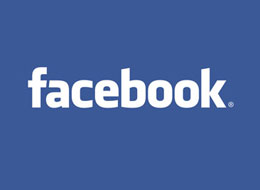 In a recent article, it’s been suggested that Twitter is becoming a major route for spammers to peddle their wares. This seems to be a feature emerging of all social networks right now, but in today’s piece I want to focus on Twitter. The view expressed in this article is pretty strong – probably an even more extreme position than I take with regard to spam on Twitter, but it’s worth looking at twitter from the perspective of whether we are participating in a network that is becoming more spam than good quality ham?
In a recent article, it’s been suggested that Twitter is becoming a major route for spammers to peddle their wares. This seems to be a feature emerging of all social networks right now, but in today’s piece I want to focus on Twitter. The view expressed in this article is pretty strong – probably an even more extreme position than I take with regard to spam on Twitter, but it’s worth looking at twitter from the perspective of whether we are participating in a network that is becoming more spam than good quality ham?
As is suggested in the article above, the relationship we have with the people we follow is rather different to the relationship we have with people who email us spam – on the whole the folks who send us wonderful offers of Viagra and millions of dollars on the Beserabian national lottery are unknown to us (and probably to any other human being on the planet). With Twitter, we’ve actually accepted the folks we follow as followers, and when one of those followers does transgress our own definition of ‘spam’ and send us a message we regard as inappropriate, as well as it being annoying there’s also a sense of betrayal of trust to a greater or lesser degree.
When we interact with people on twitter, there are two relationships involved; people follow us, and we may follow then. We only see their content if we choose to follow them. This is why I’m extremely careful in who i do follow. But even then, if someone who normally posts sensible stuff posts a couple of sales messages over a few days I’m not going to break my heart about it – I get more upset by people who ‘flood’ twitter with lots of posts one after each other or who repeat posts at frequent intervals. Such content is much more intrusive, in my opinion. They tend to be the ones who’re more likely to get put off my list of followed people than someone who sends me the odd sales message.
The other interaction is who follows us; until we also follow them, we don’t see any content that these people put up, but I’m equally protective of who I allow to follow me, based on the real world aphorism of being judged by the company that you keep. This is why I regularly screen people following me and block folks who’re obviously doing little else than selling, obvious ‘iffy’ accounts, etc. It’s important to do this as far as I’m concerned because I don’t want any of my other followers following someone based purely on the idea of ‘If they’re following Joe they must be OK!’ Just a quick look at the profile and Tweets of some some folks immediately indicates to me that they’re
The ‘silent spam’ we tolerate by allowing folks to follow us who’re ‘bad’ but whose posts we don’t notice is just as bad as the noisy spam that we’re aware of on a day to day basis. In my view I regard this sort of spam as the true voluntary spam, and as members of the Twitter community we should all be blocking and where appropriate reporting these folks, even if we are not following them ourselves.

 A few days ago I came across
A few days ago I came across  As anyone who’s ever heard me rant about the ‘numbers game’ side of networking – especially on sites such as Ecademy, Linked in or Facebook – will testify, I’m a great believer in quality rather than quantity, and until the software on such sites can do more for me than it currently does in terms of augmenting my memory and the cognitive abilities I apply when trying to remember ‘Is Fred interested in Mousterian Variability or is that Jill?’ then I use these sites to more conveniently keep in touch with roughly the same number of people I would via non computer based means.
As anyone who’s ever heard me rant about the ‘numbers game’ side of networking – especially on sites such as Ecademy, Linked in or Facebook – will testify, I’m a great believer in quality rather than quantity, and until the software on such sites can do more for me than it currently does in terms of augmenting my memory and the cognitive abilities I apply when trying to remember ‘Is Fred interested in Mousterian Variability or is that Jill?’ then I use these sites to more conveniently keep in touch with roughly the same number of people I would via non computer based means. I’ll admit it. Deep within me is a snob. As far as I’m concerned, the online world started heading down hill when you no longer had to know how to install a full TCP/IP stack to use the Internet. Most online discussion forums should, in my opinion, have an intelligence test before you’re allowed to post on them – basically the ability, for an English language website, to string together English sentences without text speech or foul language is a good starting point. OK…where was I….oh yes.
I’ll admit it. Deep within me is a snob. As far as I’m concerned, the online world started heading down hill when you no longer had to know how to install a full TCP/IP stack to use the Internet. Most online discussion forums should, in my opinion, have an intelligence test before you’re allowed to post on them – basically the ability, for an English language website, to string together English sentences without text speech or foul language is a good starting point. OK…where was I….oh yes.  Are we heading for a ‘speculative bubble’ effect in the portions of the media and IT economy that are tied up with Social Media and Social networking? Regular readers will know that I’m something of a cynic about the importance of Social Media and Social Networking; whilst it’s clearly an important aspect of marketing for the future, I am rather concerned about the importance that the ‘industry’, if we can call it that, applies to itself.
Are we heading for a ‘speculative bubble’ effect in the portions of the media and IT economy that are tied up with Social Media and Social networking? Regular readers will know that I’m something of a cynic about the importance of Social Media and Social Networking; whilst it’s clearly an important aspect of marketing for the future, I am rather concerned about the importance that the ‘industry’, if we can call it that, applies to itself. As some of you may know, I’m a newbie at Twitter. indeed, my first efforts were not impressive, I stopped, then re-joined with better results. My saga and comments are briefly recorded in these two blogposts,
As some of you may know, I’m a newbie at Twitter. indeed, my first efforts were not impressive, I stopped, then re-joined with better results. My saga and comments are briefly recorded in these two blogposts,  I’m old enough to have used an address book and still have a Rolodex on the phone table. When I actually sit down and think about the people with whom I have reasonably regular ‘quality’ contact in a 3 month period, either electronically or face to face, it probably amounts to no more than a hundred or so. I guess it’s safe to say that in the world of networking I’m a ‘quality over quantity’ sort of fellow. I’ve never been a great collector of large numbers of business cards or people details – collections are fine for stamps, coins and locomotive numbers but are kind of creepy for people. 🙂
I’m old enough to have used an address book and still have a Rolodex on the phone table. When I actually sit down and think about the people with whom I have reasonably regular ‘quality’ contact in a 3 month period, either electronically or face to face, it probably amounts to no more than a hundred or so. I guess it’s safe to say that in the world of networking I’m a ‘quality over quantity’ sort of fellow. I’ve never been a great collector of large numbers of business cards or people details – collections are fine for stamps, coins and locomotive numbers but are kind of creepy for people. 🙂 Long before it was the title of a movie, it was a fairly well known saying.
Long before it was the title of a movie, it was a fairly well known saying.  Many moons ago I posted a piece on here –
Many moons ago I posted a piece on here –